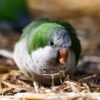- How Long Does A Quaker Parrot Live? - 17 May 2024
- 4 Hacks on Keeping Your Home Clean With Pets - 28 March 2024
- 5 Things to Know Before Bringing Home a New Kitten - 26 March 2024
Blue is the color of choice for many people and I love it too. Most very rare items are found mostly in blue whether it is living or nonliving. My exploration into the world of blue made me realize that it’s not just a pretty color. It’s connected to nature, culture, and the amazing diversity of life on our planet. The rare and special blue animals I found show how wonderful and varied life can be. I am a famous researcher and my name is Jonas. One day I searched for my favourite blue color and I found a lot of rare blue things living or nonliving. But I found a blue animal topic and I came to know that in this world quite rare animals are found in blue color. When I focused on blue animals, I learned that there aren’t many of them in the world most of them are found in the ocean.I also found some birds and butterflies with beautiful blue colors. As I continued looking into blue, I found out that the color has been important in different cultures.
Blue Animals
Here are a few stunning creatures that can be seen in the blue light of day.
1. Blue Jay
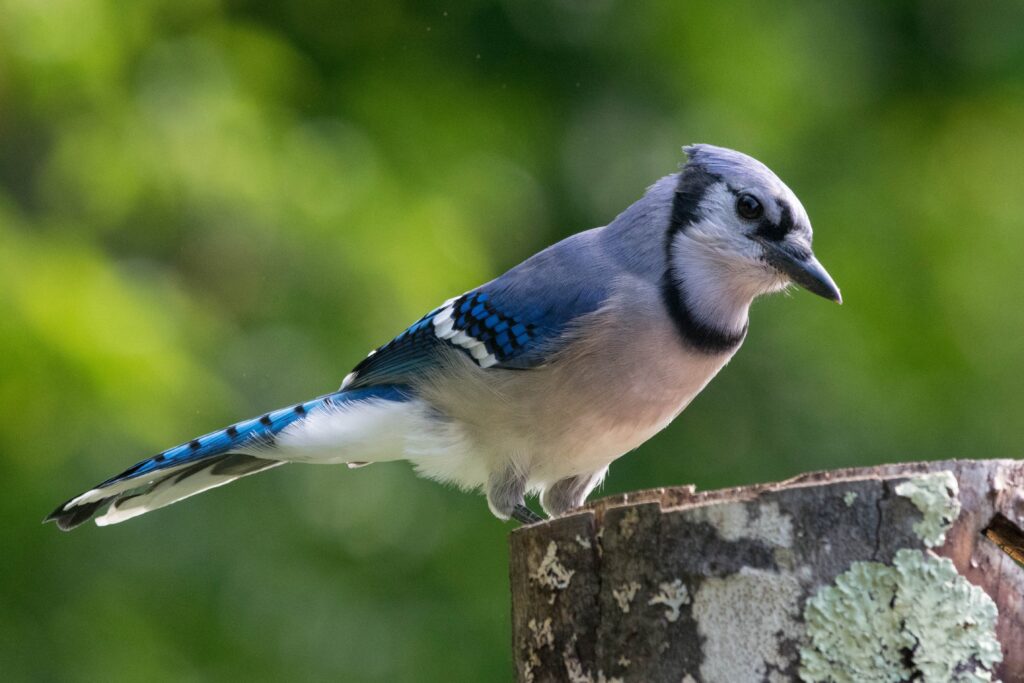
The captivating blue jay a resident of eastern North America is a marvel of nature. Its electric blue plumage punctuated by a crisp white chest and a bold black collar is a feast for the eyes. This intelligent songbird greets the world with a raucous “jay! jay!” and flits through forests and parks with an air of cheerful confidence. A master of adaptation the blue jay thrives on a varied diet stashes food in its clever throat pouch and even mimics the calls of other birds to outsmart predators. The blue jay is a real jewel of the North American avifauna, adding color and mystery to our backyards and forests.
2. Sinai Agama
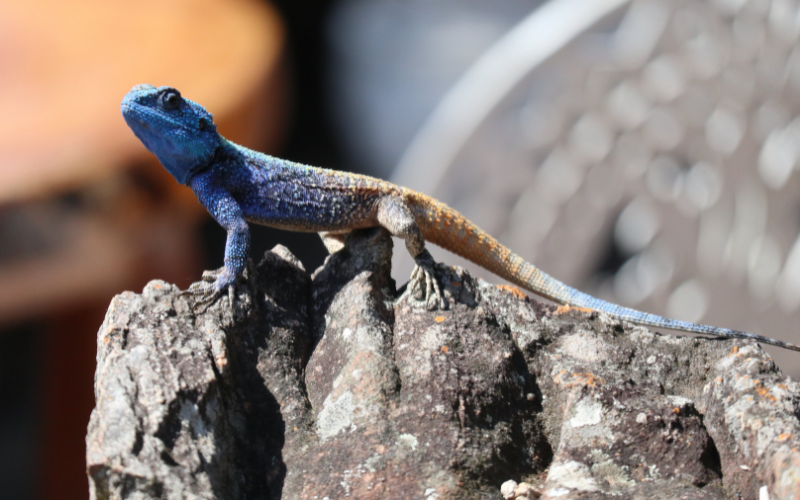
A species of lizard indigenous to the Middle East’s deserts is the Sinai agama. Its skin usually takes on a dark tone that allows it to blend in with its environment. Typically its skin adopts a brown hue enabling it to seamlessly merge with its surroundings. Yet during the lizard’s breeding season males undergo a striking transformation. Turning a vibrant shade of blue to enhance their appeal to potential mates. This unique characteristic distinguishes the Sinai agama as one of the limited number of reptiles displaying such a vivid blue coloration. Meanwhile, females maintain their brown coloration during this period, occasionally embellished with red markings on their sides.
Information Source: Blue Crested Gecko Morphs Facts, Characteristics, Price and More
3. Mandarin Dragonet
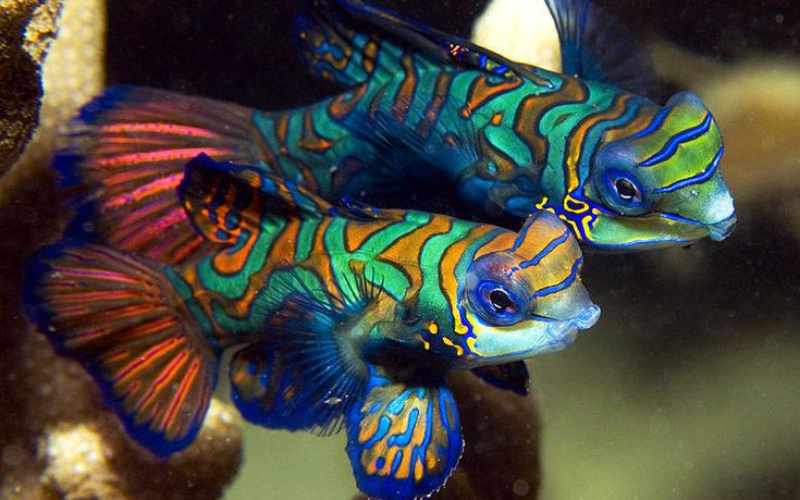
The Mandarin Dragonet alternatively referred to as the Mandarin fish or Synchiropus splendidus and eye-catching blue coloration. These small reef dwelling fish are popular in the aquarium trade for their stunning appearance. The bright blue and orange patterns on their bodies make them a sought after species among aquarium enthusiasts. Keep in mind that maintaining a Mandarin Dragonet in captivity can be difficult as they have specific dietary requirements primarily feeding on small crustaceans like copepods.
4. Blue Iguana
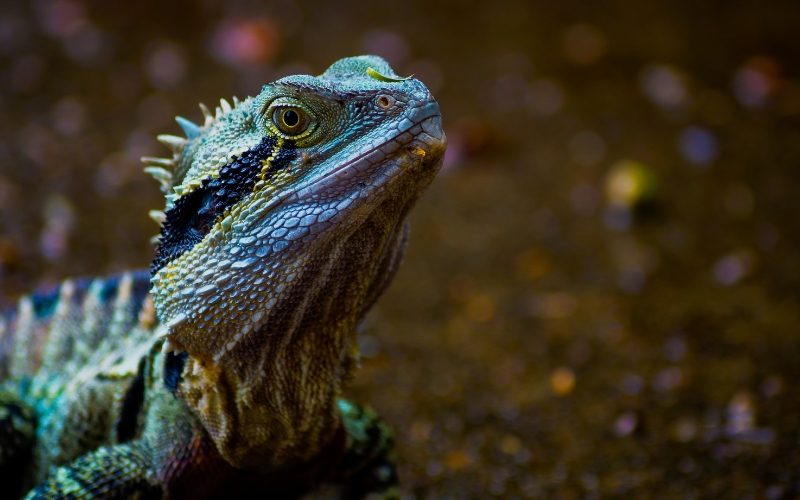
One of the most common skin tones observed in blue iguanas is a vibrant electric blue. This intense shade covers much of their body creating a visually stunning appearance. The intensity of the blue can differ based on factors such as age, health and even mood. Younger iguanas often exhibit a brighter blue coloration. Which may gradually shift as they mature. Some blue iguanas showcase intricate patterns and variations. These can include darker blue stripes spots or a mix of colors that create a mosaic like effect on their skin.
The fascinating aspect of blue iguana skin tones is their ability to change. Environmental factors temperature and the lizard’s emotional state can influence the intensity of their coloration. When basking in the sunlight, blue iguanas may appear more vibrant with their skin reflecting and refracting light to create a mesmerizing display of shades. The health of a blue iguana can impact its skin color. A healthy iguana tends to display more vivid and saturated hues while stress or illness may lead to a duller appearance.
Learn more: Can Bearded Dragons Eat Blackberries?
5. Indian Peafowl

The Indian Peafowl also called a peacock has really pretty blue colors in its feathers. The special blue comes from tiny structures on the feathers not from regular coloring. These structures scatter light to make the feathers look bright blue and green. The peacock’s tail feathers also have shiny green and bronze patterns that stand out. The colors help the peacock attract a mate and scare away animals that might want to harm it. The bright and beautiful colors on the peacock make it look amazing and special in nature. People really like the peacock because of its pretty blue feathers and it is seen as a symbol of beauty and elegance.
6. Blue Poison Dart Frog
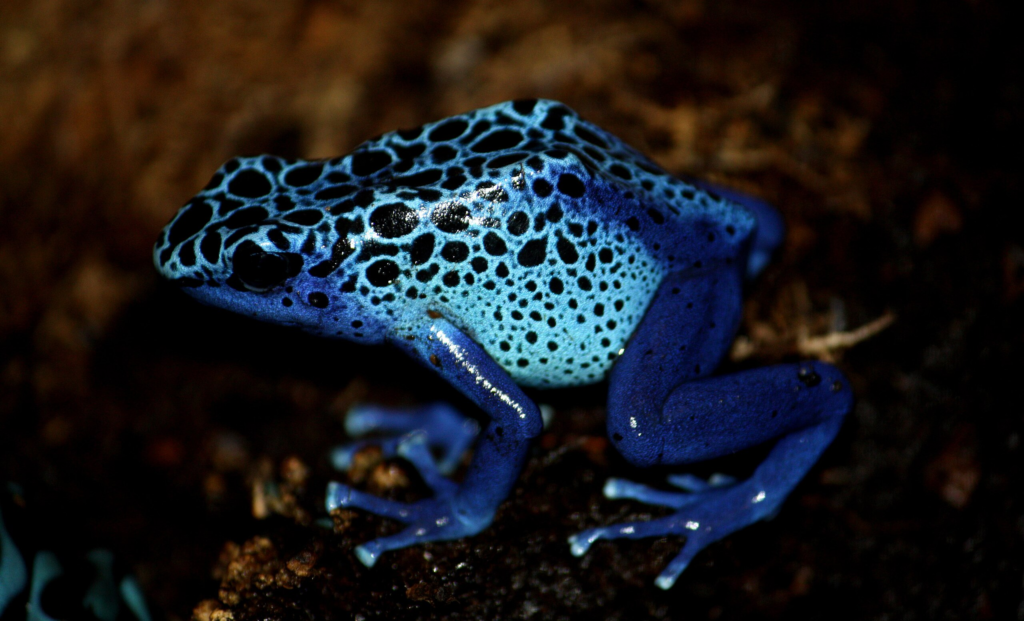
The stunning blue colors found in the skin tones of Blue Poison Dart Frogs are a result of intricate biological processes and pigmentation. The skin of the Blue Poison Dart Frog features layers of cells and nanoscale granules that scatter light in a specific way. This structural coloration similar to the phenomenon observed in certain butterflies and birds enhances the perception of the blue tones. Which can be harmful or even deadly to predators. The vibrant blue coloration thus acts as a visual signal, deterring predators from attempting to consume them.
7. Blue Whale

The blue whale an immense marine mammal, can meet lengths of up to 98 feet and weigh around 175 tons. Inhabiting nearly every ocean on Earth this species has faced a significant decline in numbers due to extensive whaling in the 20th century with only an estimated 5,000-12,000 blue whales remaining today. Characterized by its lengthy and slender body the blue whale’s skin displays varying shades of blue-gray with a white underside, and a generally gray head and tail. Typically the upper part of the blue whale undergoes molting.
8. Blue Dacnis

The blue dacnis also known as the Turquoise Honeycreeper resides in South America occupying woodlands, forests, parks and gardens. Adult male birds exhibit a vibrant blue coloration featuring black on the throat back and around the eyes. Additionally certain sections of the wings and tail are black adorned with a turquoise edge. In contrast females and immature individuals typically display a green hue with blue heads.












